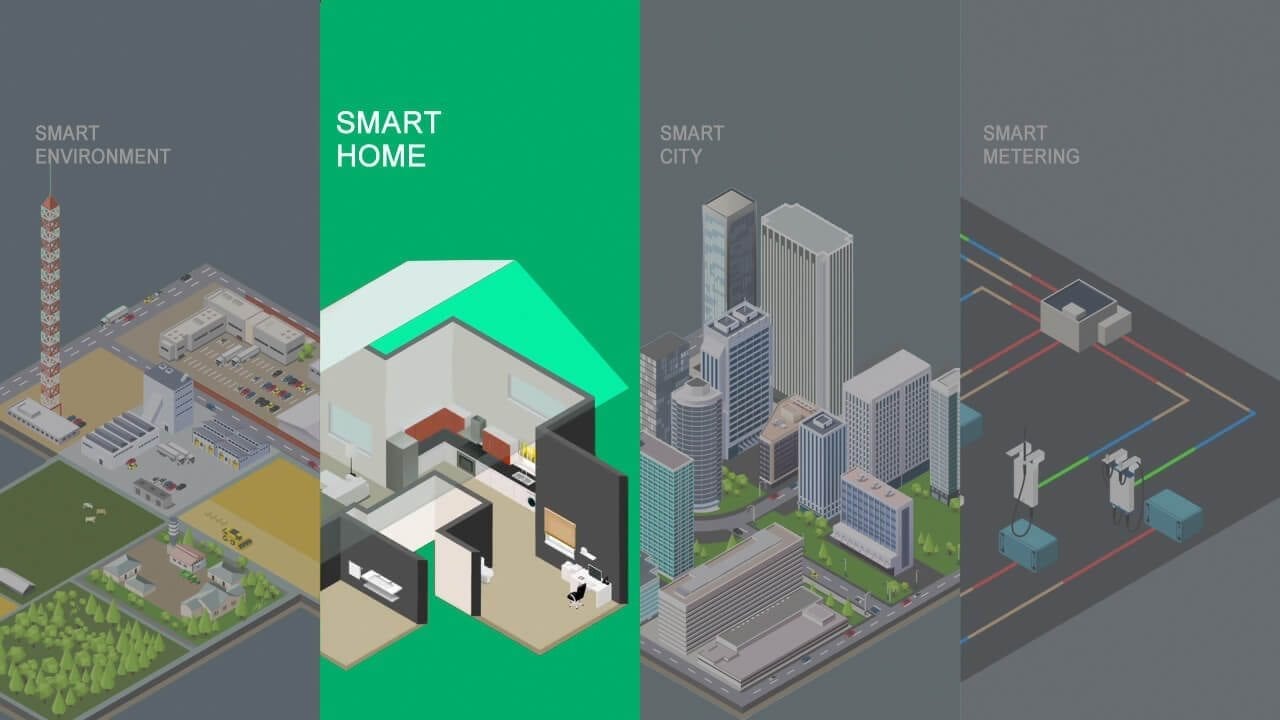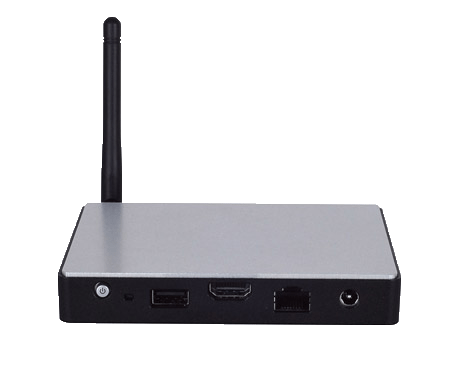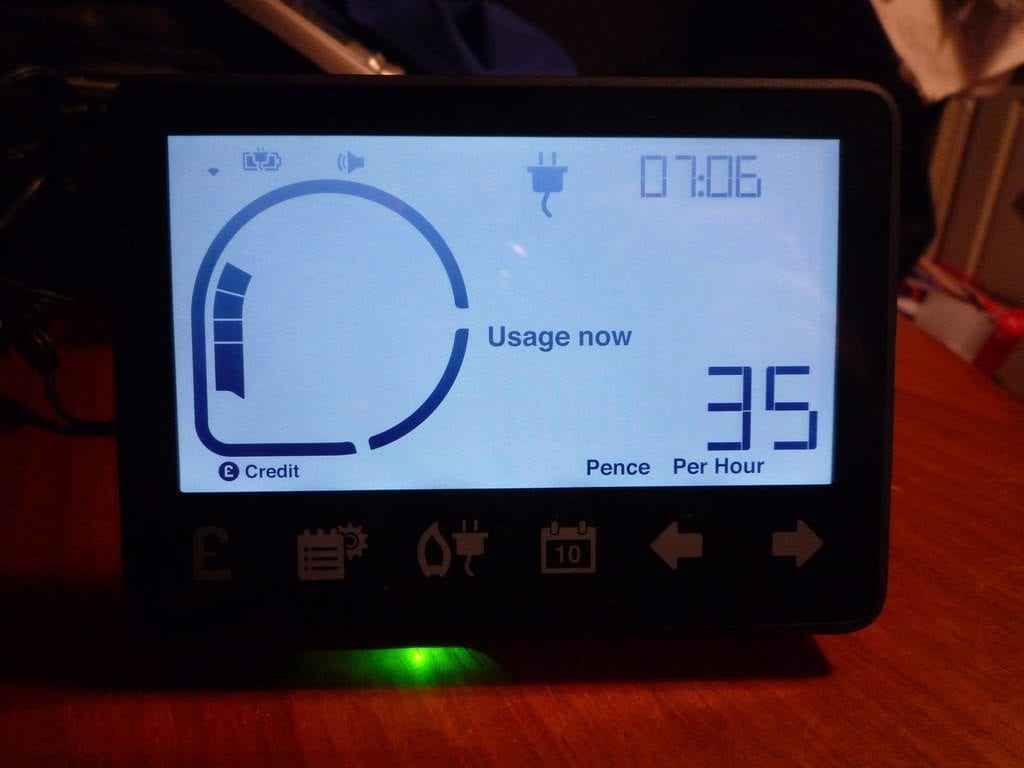
Smart meters, motion-controlled lighting, smart appliances, heating, and biometric security systems are just a few examples of the ways in which smart home technologies are automating and enhancing people’s homes all around the world.
In this article, we’ll take a look at Smart home gateway as well as some of the other technologies that hold key importance in smart home automation as well as some of their potential applications around the home.
Smart Home Technologies
Today, there are various different smart home technologies available from different IoT vendors. Most operate using WiFi, Bluetooth, or ZigBee communications (more on that later) and can be connected to most wireless personal area networks (WPANs). These smart meters, cameras, sensors, and devices are capable of performing virtually any function around the home, from security and surveillance to automation of everyday chores such as vacuuming. Let’s now take a look at some of the examples of smart home technologies being put to use in smart homes around the world today.
Smart Home Gateway
One of the key goals of a smart home is convenience and managing a number of smart devices through multiple apps in your home can become completely the opposite if not for the Smart Home Gateway (AKA Smart Home Hub or Controller). Smart home gateway systems are an essential part of smart home automation providing centralized management for the user.

Lanner NCA-1010
Smart hubs come in several different varieties such as closed architecture based systems that only control and monitor devices from the same OEM, and, open platform based smart home gateways that can integrate with majority of smart devices and run any Linux or windows based software, regardless of brand or manufacturer. These x86 architecture based smart home gateway hardware platforms also work as secure gateways for cloud enabled services for home automation or entertainment. While many smart home appliances aren’t reliant on a smart home controller to run, some are 100% dependent on being managed from a centralized console.
Smart Meter
Smart Meters are an important part of a smart home as energy efficiency is pretty much at the heart of building smarter societies using latest technologies.  Smart Meters are built for near real-time two way communication between energy supplier and the consumer over a wireless network. Smart meters allow supplier and the consumer to see their electricity usage and costs in real time to make better energy generation (supplier) and consumption (user) decisions. Smart Meters are connected to the neighborhood area network (NAN) using RF communication protocols. Each NAN has one pole mounted Data Aggregator that serves as the gateway between the NAN, Substation and the Utility head-end systems.
Smart Meters are built for near real-time two way communication between energy supplier and the consumer over a wireless network. Smart meters allow supplier and the consumer to see their electricity usage and costs in real time to make better energy generation (supplier) and consumption (user) decisions. Smart Meters are connected to the neighborhood area network (NAN) using RF communication protocols. Each NAN has one pole mounted Data Aggregator that serves as the gateway between the NAN, Substation and the Utility head-end systems.
ZigBee
In order to be able to work efficiently, smart home appliances such as smart thermostats, motion-controlled lighting fixtures, or any of the plethora of gadgets and devices available from IoT vendors need to be able to send and receive data so as to allow them to analyse and process it in order to function optimally. ZigBee is a low-power, wireless mesh network designed to handle many devices at low data rates. ZigBee networks are mainly deployed in areas where the controlling and monitoring applications it covers fall within a 10-100m range and can also support different network configurations for both master to master or master to slave communications. It makes it perfect communication protocol for small project implementation such as a smart home or a clinic.
Room Environment Control Sensors
Remote environment control can come in many forms, from lighting, heating, and even everyday chores such as vacuuming. There are various ways in which these technologies are used around smart homes and, with the help of wide area personal networks or low-power wide area networks, could become an everyday feature in smart homes of the future. In some smart home examples, motion sensors are connected to lighting fixtures around a smart home and share data so as to enable the lights to follow a person from room to room, turning on when it is detected they enter and turning them off again once they are detected leaving.
Camera-Based Access Control
 One of the most exciting applications is camera-based access control, whereby networked cameras are located outside a property, just above a front door, for example, and work together with motion sensors in order to send notifications via apps to the app user when the sensor’s area of operation is entered. Smartphone apps can then also provide a live stream of the video feed to its user in order to provide two-way communications between the user and whomever has entered either its or the motion sensors operative area. In the future, advanced facial recognition features could be implemented to these systems in order to provide enhanced access control.
One of the most exciting applications is camera-based access control, whereby networked cameras are located outside a property, just above a front door, for example, and work together with motion sensors in order to send notifications via apps to the app user when the sensor’s area of operation is entered. Smartphone apps can then also provide a live stream of the video feed to its user in order to provide two-way communications between the user and whomever has entered either its or the motion sensors operative area. In the future, advanced facial recognition features could be implemented to these systems in order to provide enhanced access control.
Applications
The number of potential applications for these smart home technologies seems to grow constantly and innovative, new iterations of existing technologies are constantly being developed.
Energy Conservation
By receiving real time usage data through smart meters, suppliers are able to offer dynamic pricing model to their consumers. Which means that the consumers are offered different rates for peak hour usage compared to other hours during the day. This way they can plan to use high energy consuming appliances at times when the rate is cheaper.
It also allows energy supplier to align power generation with the usage patterns of the area they are serving saving them costs incurred on over-generation as well as blackouts.
Emergency and Security
During an emergency, residents of a smart home are much more likely to avoid injury or death if their home is assisting them throughout the ordeal. For example, in the case of a fire, smart home technologies could be applied so that smoke detectors sent notifications and alarm communications to a resident’s smartphone or home alarm system, while also notifying emergency services of the situation, unlocking all the locked doors within a home and illuminating the quickest escape route. The same is true for security and protection technologies that are able to notify police forces when an intruder is detected within a smart home or wearable medical devices that alert medical staff when certain medical criteria are breached.
Accessibility
Accessibility and access control is also a huge area in smart home technological application. From video-based access control to remotely locked doors, fingerprint or other biometric authorisation, and even controlling which areas of the house our pets are allowed, there are various ways in which smart home technologies are making everyday household items easier to use, monitor, and control. Apps for controlling a smart home’s heating, energy consumption, lighting, door locks, refrigerators, and much more are all changing the way in which people are using and living in their homes.
Automation
Automation is one of the main driving forces behind the continued advancement of Internet of Things and smart home technologies. Just as it has started to with industrial automation, the Internet of Things and its associated technologies and gadgets is now looking to bring advanced automation into the home. Automated vacuum cleaner robots, heating systems, lighting, music, and appliances are being automated to create more convenient and efficient smart homes.
With incoming upgrades such as 5G wireless communications networks on the horizon, it would seem reasonable to assume that we will begin to see smart home market to have players from other tech segments as well, such as Artificial Intelligence and Virtual Reality/Mixed Reality. Running some of these applications and other cloud based automation services in a home environment will require near edge cloud resources and a secure smart home gateway. Enterprise class horsepower and flexibility packed in a home gateway will offer the perfect platform and ease of management a smart home of future needs to implement robust and reliable home automation.






